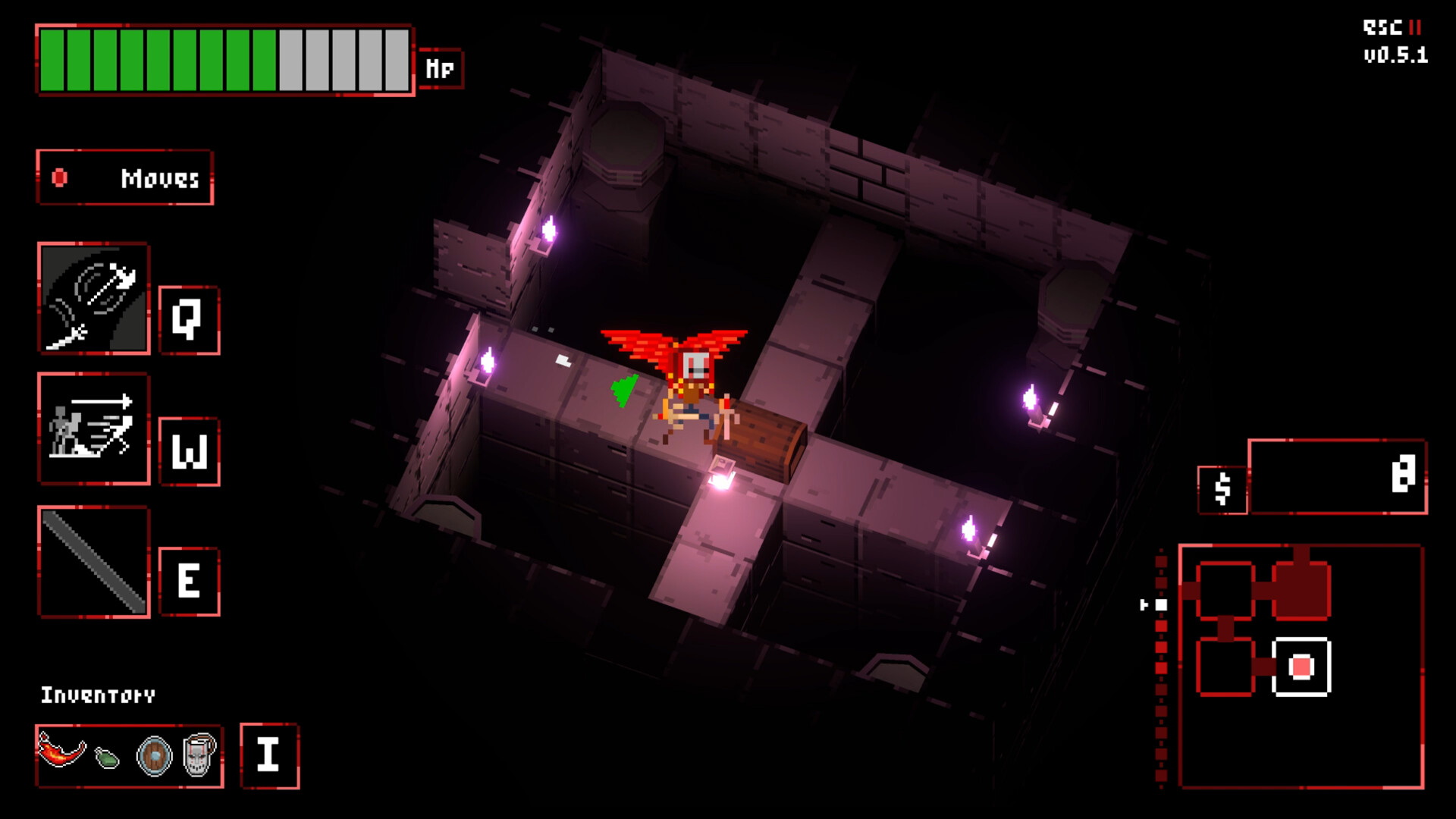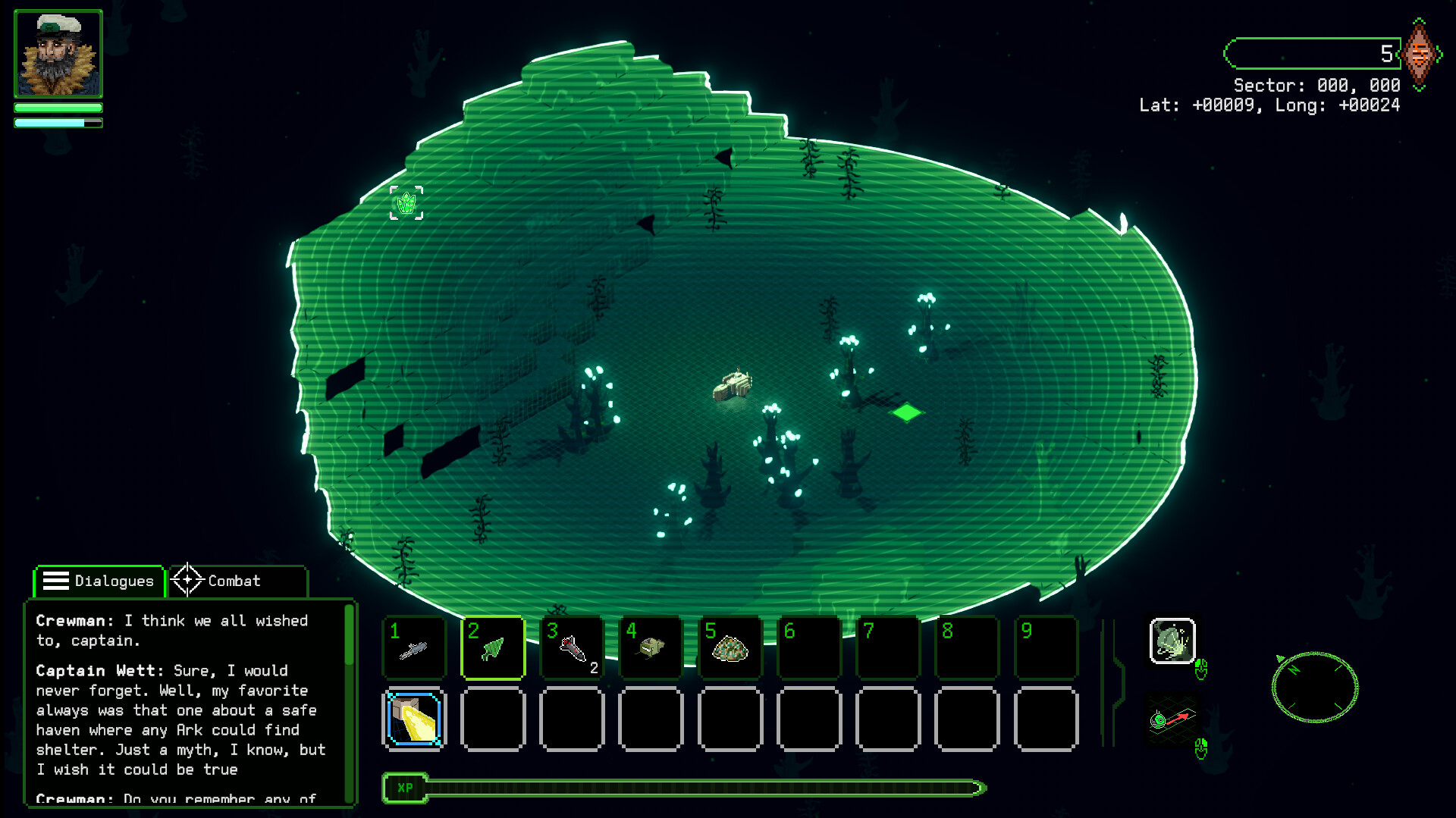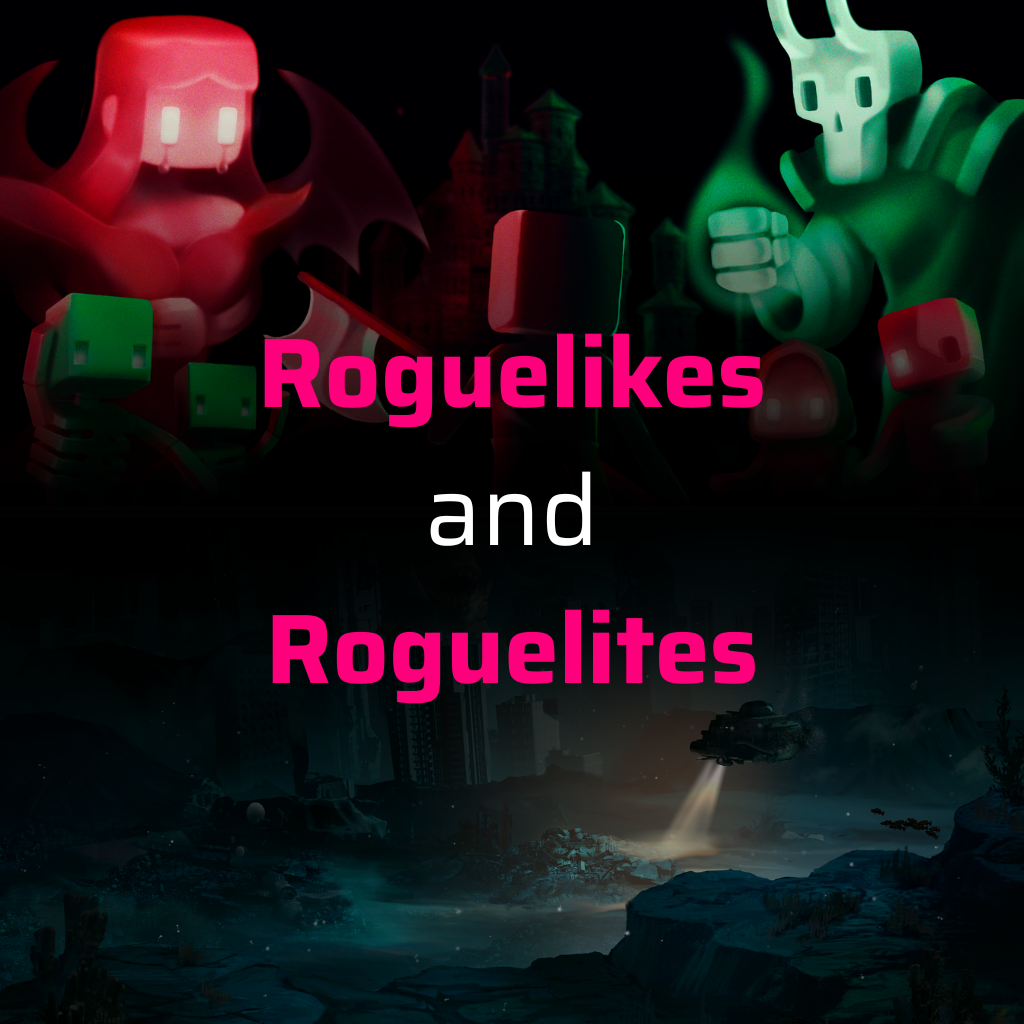Many players had the experience of testing their abilities and luck in a run of Binding of Isaac and Enter the Gungeon. Others have ventured deep in the dungeons of Angband or through the sprawling world of Caves of Qud. But a question might arise: What is a roguelike, and what ties all these games together? (or set them apart?)
Let’s explore how that affects our games and the overall philosophy of Crit42!
What is a roguelike?

A roguelike is a genre born from Rogue in the early 1980s, defined by procedurally generated dungeons, turn-based grid-based combat, and permadeath, leading to a fresh, unpredictable experience with each run. Over time, elegance of mechanics took precedence over permanent world-building, focusing on player adaptation, exploration, and risk. The traditional roguelikes (or, as some say, simply roguelikes) share DNA with classic RPGs: exploration of dangerous environments, character-building through gear and levels, and deep strategic combat. Early roguelikes distilled full RPG systems into tighter loops, with emerging mechanics like permadeath and procedural worlds bringing renewed tension, melding RPG progression with methodical planning.
Traditional Roguelike vs. Roguelite
Traditional roguelikes lean hard into procedural generation, permanent death, and complex simulation systems. Roguelites borrow these mechanics, such as random environments and repeated runs, but often include persistent progression (unlockable gear, meta‑currency) and more forgiving checkpoints. The result: more accessible, yet still thrilling experiences. Each type of game might appeal to different audiences, with fans of a deep and complex traditional roguelike not having the same “kick” from, let’s say, Spelunky and similar games. However, the accessibility of those games has brought many to the genre, who later might even become avid traditional roguelike fans. In the end, it’s about understanding other players and sharing a community, despite the differences. And how that connects fellow gamers.
| Feature/Mechanic | Traditional Roguelike | Roguelite |
| Procedural generation | Fully branching, random dungeons levels and item distributions | Yes, but often structured around fixed biome progression (e.g., rooms → floors) |
| Permadeath | Full permadeath; no progress or items carried over | Usually permadeath per run, but with meta‑progression allowing grind or upgrades between runs |
| Progression across runs | None; each playthrough starts fresh | Persistent unlocks like items, abilities, characters, currency |
| Turn-based & Grid Based Movement | Yes, typically with tile/grid worlds and turn‑based action, often ASCII or minimal graphics | Rare; most feature real‑time movement (top-down shooter, platformer) |
| Complex Simulation & RNG Systems | Deep emergent systems: inventories, stats, complex interactions | Simpler, more focused interactions; streamlined item synergies, less simulation complexity |
| Combat style | Tactical, step‑based; emphasizes strategy | Fast-paced, real-time combat (shooters, platformers, action hybrids) |
| Difficulty & Learning Curve | Steep, punishing; mastery through trial and deep understanding | Still challenging, often more accessible; meta‑progression eases repeated failure |
| Narrative & Theme | Emergent lore via mechanics; minimal explicit story | Often includes thematic framing, unlockable characters, story beats across runs |
| Visual representation | Primarily ASCII/tiles, top‑down view | Ofter colorful, stylized 2D graphics; platformer/shooter perspectives |
| Meta-game & Replay Value | Focus on mastery, scoring, high re‑play driven by system depth | Unlock systems provide ongoing rewards, daily runs, increasing variety |
The Crit42 way of creating
At Crit42, we believe that mechanics themselves can tell stories. Every choice, dungeon foray, upgrade pick, or enemy confrontation should resonate emotionally or thematically. We lean into narrative through world‑building and emergent moments from gameplay loops, giving every run meaning even without explicit cutscenes or dialogue. And all of those elements gain an extra powerful meaning when done in community. You can have a powerful story, an experience which emerged from an incredible gameplay, but the act of sharing that with friends and other gamers give that an extra meaning. That’s why, even in Solo Tabletop RPG (yes, that exists) communities, many people will write down reports of their sessions and share among others. It is in the storytelling nature of the human being and, as a consequence, in the creativity and daydreaming of gamers. We focus on creating games that allow emergent and unique narratives to grow during a run, and we apply that heavily on the two games we will talk about in this post.
Dreadstone Keep

Dreadstone Keep is Crit42’s distinct entry into the roguelike universe, blending core genre principles with modern sensibilities in a way that straddles the line between traditional roguelike and roguelite. It’s a tactical, turn-based strategy game rooted in procedural challenge and run-based progression, while also incorporating dynamic decision-making and flexible builds that evolve with each playthrough.
At its core, Dreadstone Keep celebrates the essence of traditional roguelikes, focusing on:
-
One run, one story: You descend or ascend through the castle, not with the goal of unlocking permanent abilities, but to see how far your build and strategy will take you this time.
-
Deliberate combat: Unlike many action roguelites, Dreadstone’s turn-based system prioritizes careful positioning, enemy prediction, and resource timing.
-
Random but not chaotic: The game world is procedurally generated, but it’s built around tactical integrity. You’re never unfairly rushed.
Though it leans heavily into tradition, Dreadstone Keep does flirt with roguelite flexibility. This is something noticeable in its 100+ upgrades, with powerful and unique synergies that result in no two runs being alike. You may go from summoning a Rogue Demilich to teleporting chaotically around the map, pushing the envelope of classic roguelike stat systems into expressive experimentation.
Another element that is explored is the bi-directional progression. Choosing to start exploring towards the top or bottom of the Keep changes not only the biome and enemies you face, but also shapes how you plan your build, a rare feature even among modern roguelites. Also, the pixel art style with a clear heroic fantasy frame, we bring Dreadstone as a visually and thematically more accessible title than those ASCII-heavy classic roguelikes, inviting a broader audience into its systems.
Dreadstone Keep isn’t trying to soften the roguelike genre, but rather refocus it through clarity, creativity, and elegance. It respects the roots of Rogue and Angband by keeping permadeath, turn-based tactical gameplay, and emergent challenge central, while inviting players to explore wild, memorable builds within self-contained runs.
It’s a roguelike that plays like a roguelike, yet surprises like a roguelite.
A Tale of Silent Depths

A Tale of Silent Depths is Crit42’s deep dive into tactical storytelling through systems. It’s a turn-based tactical RPG infused with roguelike progression, open-world exploration, and a richly atmospheric post-apocalyptic underwater setting. The game doesn’t just wear its genre influences: it submerges them into a haunting ocean of freedom, survival, and emergent narrative.
At its core, A Tale of Silent Depths is a roguelike reimagined as an open-ended tactical RPG. Each expedition through the drowned world becomes a self-contained journey with:
-
Procedural maps and shifting threats: Every corner of the ocean offers something different: sunken temples, pirate battlegrounds, colossal monsters, or secrets best left undisturbed.
-
Emergent storylines born of choice and consequence: Whether you choose diplomacy or firepower, exploration or dominance, your actions affect what you encounter and how the world reacts.
-
Diverse enemy behaviors and combat variety: No fight plays the same. From mind-warping deep-sea horrors to intelligent Ark factions, enemies come with unique traits and tactics that require adaptive strategies.
Though deeply roguelike in death and randomness, Silent Depths also borrows smartly from roguelites, such as run-to-run build experimentation, offering a modular progression system for equipment, drones, crew skills, crafted items, and Ark upgrades, letting you experiment with entirely different playstyles each run. Also, we focus on providing replay that incentives mastery, meaning there’s always something new to discover: forgotten technologies, lost ruins, strange sea beasts, or pieces of a fragmented past. Each failure encourages new exploration.
The world is more than a backdrop. Lore is densely embedded in encounters, discoveries, and environmental storytelling, adding weight to player decisions and context to the danger. Where Dreadstone Keep distills classic roguelike tactics into a focused challenge, A Tale of Silent Depths expands the genre horizontally. It opens the roguelike formula into an oceanic sandbox with survivalist themes, multiple viable roles, and emergent storytelling, all while respecting the fundamental design ethos of risk, replay, and randomness.
Whether you perish in the depths, ascend as a legend of the flooded world, or become something stranger still, each run tells a new story. And that’s our main goal of the game as devs.
Conclusion
In both titles, Crit42 taps into the roguelike spirit: procedural worlds, high-stakes decision-making, and deep systems, while layering in persistent progression and strong thematic identity. Through emergent narrative, mechanical storytelling, and replay-driven world discovery, our games aim to be both challenging and meaningfully replayable.
Join us on Discord to share feedback, join early playtests, and shape future content. Follow along on social for behind‑the‑scenes insights, art reveals, and upcoming announcements. Dive into the roguelike adventure, and help us shape it!


